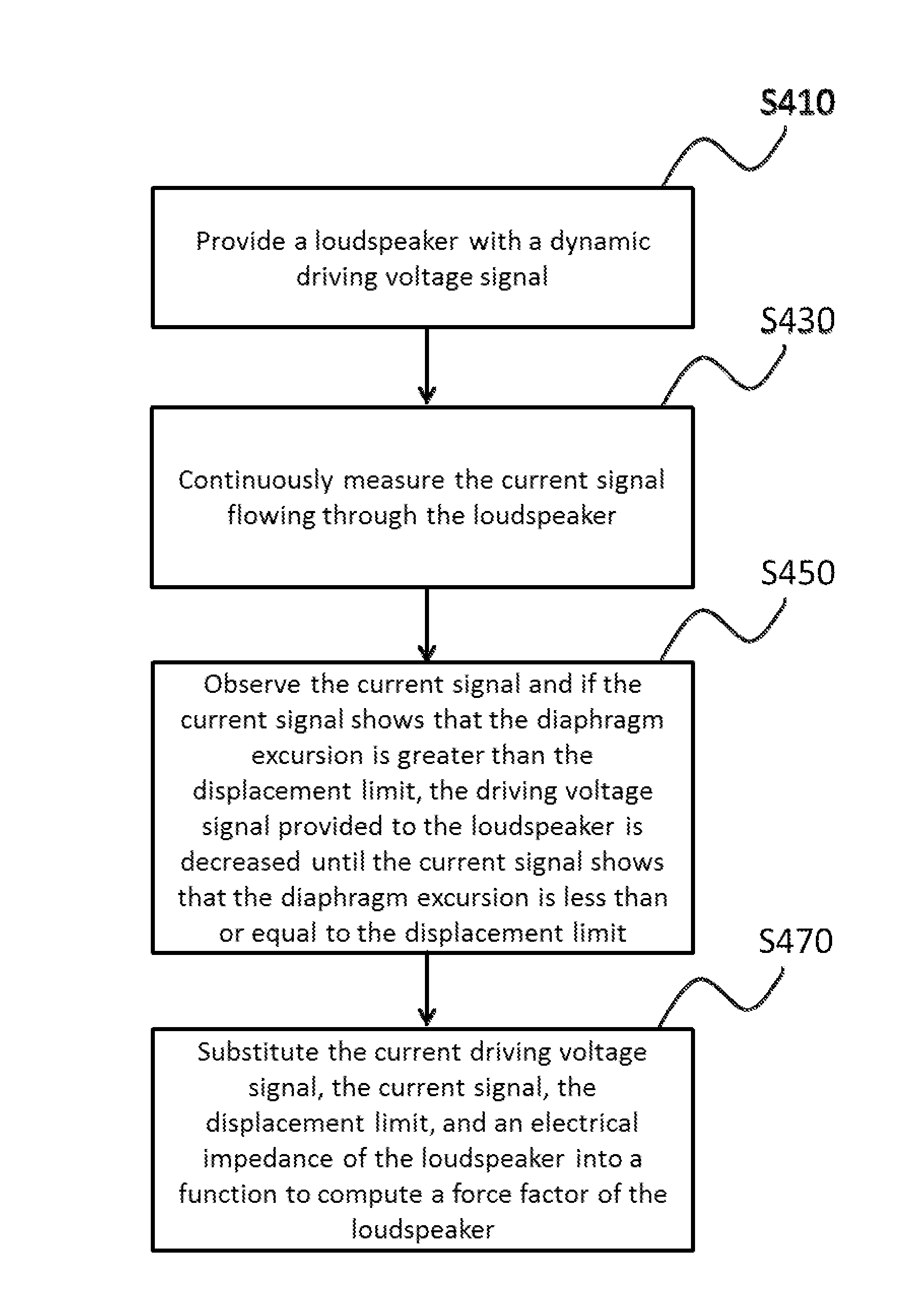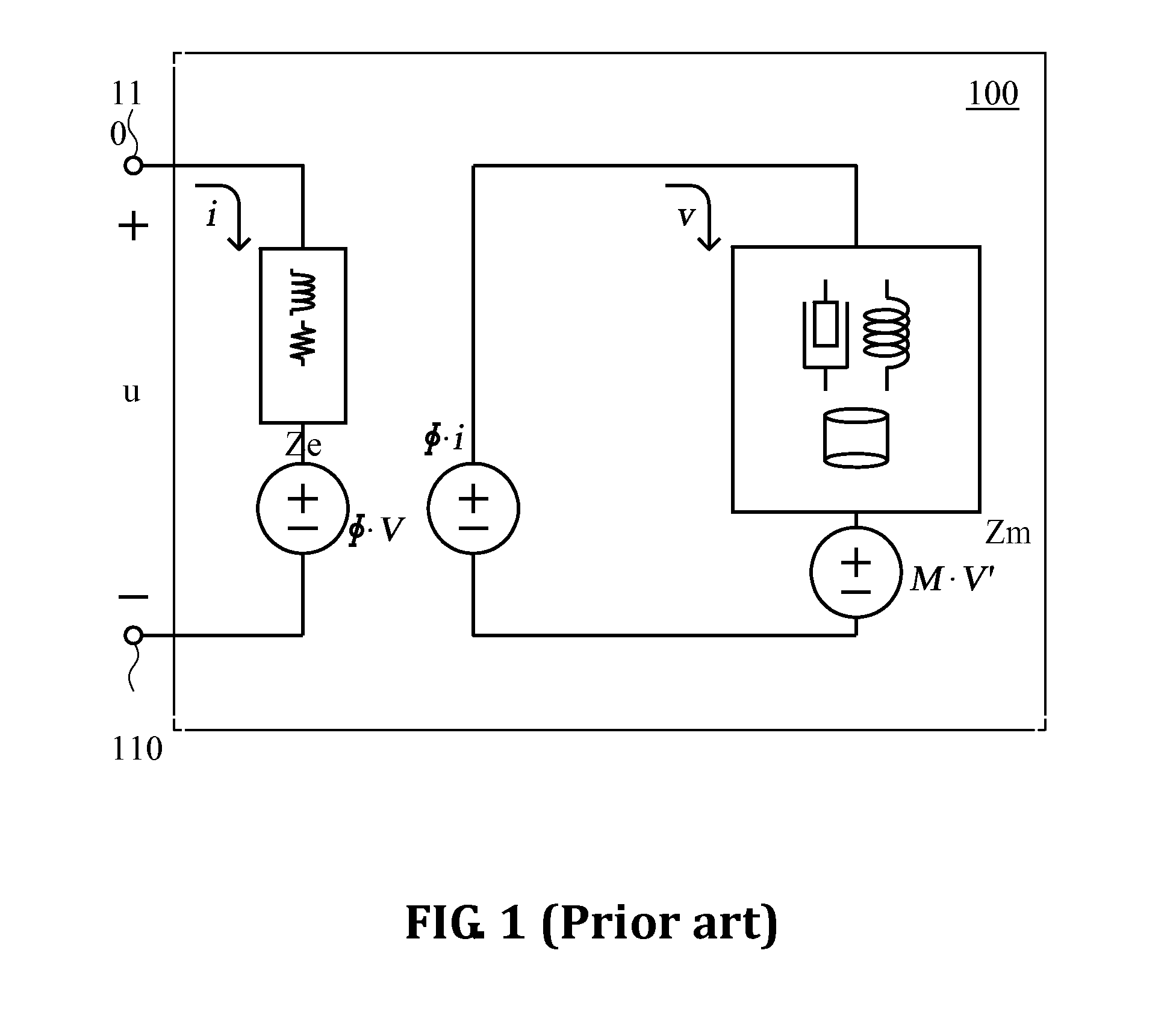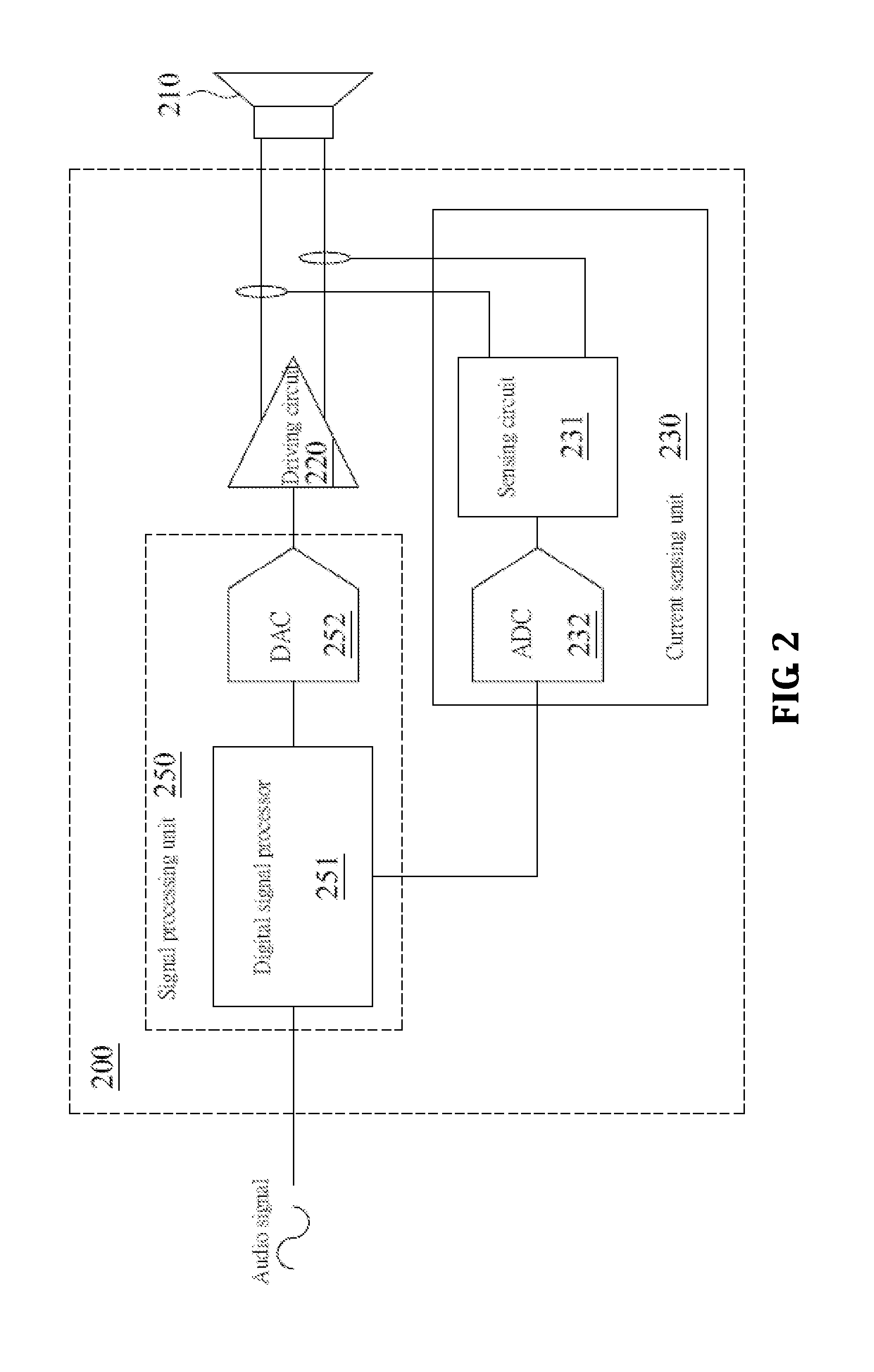Device and method for detecting force factor of loudspeaker
a technology of force factor and loudspeaker, which is applied in the field of loudspeaker force factor detection devices and methods, can solve the problems of diaphragm excursion (i.e., the integral of velocity, v) cannot be obtained without, and the diaphragm property change, or a shorter lifetime, can not be achieved. , to achieve the effect of accurate detection of the force factor of the loudspeaker, increasing applicability and convenien
- Summary
- Abstract
- Description
- Claims
- Application Information
AI Technical Summary
Benefits of technology
Problems solved by technology
Method used
Image
Examples
first embodiment
[0030]FIG. 2 shows a circuit diagram of a device 200 for detecting a force factor of a loudspeaker according to the present invention. The equivalent circuit of the loudspeaker 210 can be referred to FIG. 1 and its description. The device 200 for detecting the force factor includes a driving circuit 220, a current sensing unit 230, and a signal processing unit 250.
[0031]The driving circuit 220, coupled to the loudspeaker 210, receives a control signal generated from the signal processing unit and generates a dynamic driving voltage signal for driving the loudspeaker 210. For example, the dynamic driving voltage signal is a form of a sinusoid with a specified time period. The frequency of the sinusoid is either between the resonant frequency of the loudspeaker 210 and 1 Hz or vicinity of the resonant frequency of the loudspeaker 210. The frequency of the sinusoid can be set to a relatively lower frequency, for example, 100 Hz, if the detection operation is meant to be hidden from end...
second embodiment
[0043]FIG. 4 is a flowchart of a method for detecting a force factor of a loudspeaker according to the present invention. The steps of the method are described as follows:
[0044]In step S410, provide a loudspeaker with a dynamic driving voltage signal. The dynamic driving voltage signal, for example, may be a form of a sinusoid with a specified time period, where the frequency of the sinusoid is either between the resonant frequency of the loudspeaker 210 and 1 Hz or vicinity of the resonance frequency of the loudspeaker 210. The frequency of the sinusoid can be set to a relatively lower frequency, for example, 100 Hz, if the detection operation is meant to be hidden from end users. A proper time period is determined based on the cycle of the said sinusoid. For example, when the frequency of the sinusoid is 100 Hz, the time period can be set to 10 ms, thus making the end users unaware of the sound wave for test purpose, where the sound wave is generated by the driving voltage signal....
third embodiment
[0048]FIG. 5 is a flowchart of a method for detecting a force factor of a loudspeaker according to the present invention. The steps of the method are described as follows:
[0049]The description of steps S510, S530, and S570 can be referred to the description of steps S410, S420, and S470 respectively, according to the second embodiment shown in FIG. 4.
[0050]In step S550, observe if the oscillating amplitude of the second derivative of the current signal is greater than a predetermined value and if the oscillating amplitude is greater than the predetermined value, which the diaphragm excursion of the loudspeaker is deemed to be greater than the displacement limit, decrease the driving voltage signal provided to the loudspeaker 210 until the oscillating amplitude of the second derivative of the current signal is less than or equal to the displacement limit, where the predetermined value is positively related to the magnitude of the driving voltage signal.
[0051]It should be noted that a...
PUM
 Login to View More
Login to View More Abstract
Description
Claims
Application Information
 Login to View More
Login to View More - R&D
- Intellectual Property
- Life Sciences
- Materials
- Tech Scout
- Unparalleled Data Quality
- Higher Quality Content
- 60% Fewer Hallucinations
Browse by: Latest US Patents, China's latest patents, Technical Efficacy Thesaurus, Application Domain, Technology Topic, Popular Technical Reports.
© 2025 PatSnap. All rights reserved.Legal|Privacy policy|Modern Slavery Act Transparency Statement|Sitemap|About US| Contact US: help@patsnap.com



